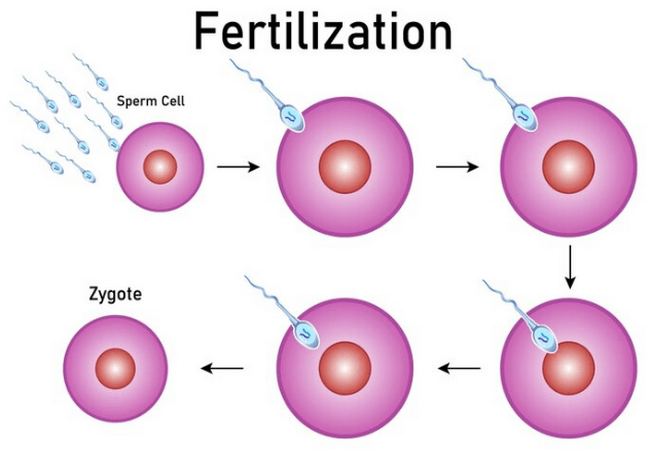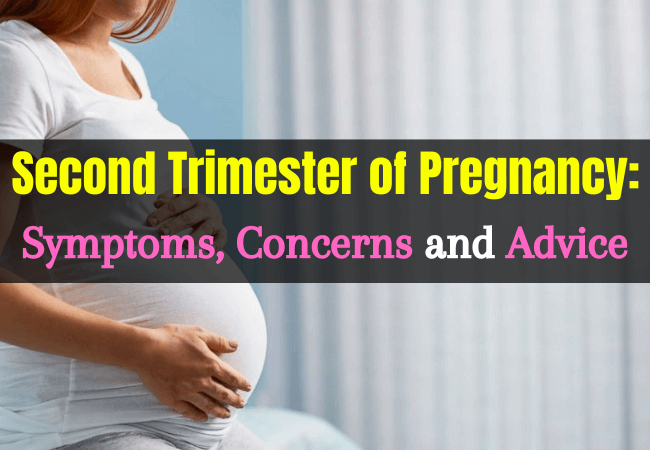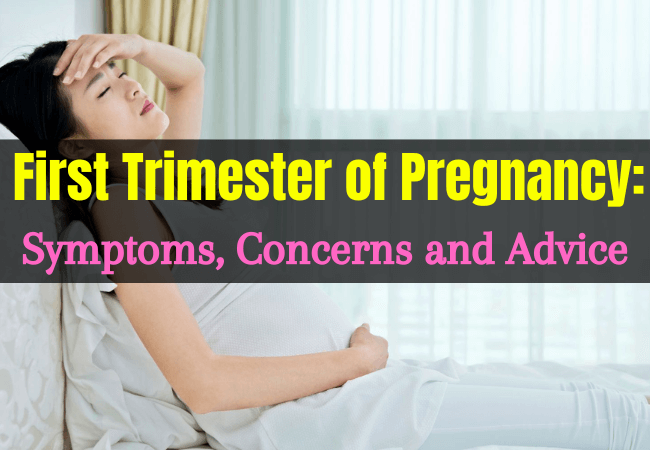Fertilization in Humans: Stages, Phases, Process and Steps
Definition of Fertilization in Humans:
Fertilization is the process of combining the male gamete, or sperm, with the female gamete, or ovum. The product of fertilization is a cell called a zygote. It is the process by which male and female germ cells fuse to form a zygote.

Process or Phases of Fertilization:
1. Transport of spermatozoa:
200-300 million of spermatozoa deposit in the female genital tract. Among them 300-500 reach in site of fertilization. Of them only one is needed for fertilization. Other helps in barrier penetration.
You can read: What are the Steps of Family Planning Counselling?
2. Barrier penetration:
- Penetration of corona radiate: The corona radiata cells are disperse by the combined action of sperm (acrosomal reaction) & sutbal mucosal enzyme.
- Penetration of pellucida: It is penetrated by the sperm with the aid of enzyme (trypsin like substance, acrosin) released from the inner acrosomal membrane. After coming of the 1 sperm in contact with the oocyte surface, zona reaction occurs to prevent further entry of sperm.
- Fusion of oocyte and sperm cell membranes: When the sperm touches the oocyte cell membrane, the two plasma membranes fuse. Leaving the plasma membrane behind, the head & tail of sperm enter the cytoplasm of the oocyte.
3. Pronucleus formation:
Now the oocyte completes its 2nd meiotic division. The daughter cell which receives more cytoplasm forms the female pronucleus. In case of male, nucleus form the head of the sperm becomes, swollen to form male pronucleus.
4. DNA replication:
Replication of DNA occurs in both pronuclei during their formation.
5. Mitotic division:
The pronuclei meet their nuclear membranes disappear and chromosomes are arranged in distinct manner for the normal mitotic division.
Various Steps or Stages in Fertilization in Humans:
It includes-
- Movement of the sperm towards the egg,
- Capacitation and contact,
- Penetration of sperm into ovum,
- Cortical reaction,
- Activation of the ovum,
- Fusion of male and female pronuclei (amphimixis).
All the above steps or stages in fertilization have explained in the below:
1. Movement of the sperm towards the egg:
This is the first step which brings the sperm in physical contact with the ovum. As the male and female gametes are produced in different individuals, there are various mechanisms to bring them nearer. The initial attraction of the sperms towards the egg is supposed to be chmotactic. The sperms swim towards the egg collides with it. Usually several sperms attach themselves to the egg.
In individuals with external fertilization large number of eggs and sperms are released outside so that they have a favorable chance of meeting with each other. In individuals with internal fertilization the sperms are discharged into the genital tract of the females by the male individual. From here the sperms move upward and reach the egg present in the uterus.
2. Capacitation and contact:
When a large number of sperms approach the egg for contact, the fertilizin and antifertilizin reaction ensures that only a few spermatozoa are allowed to reach the ovum. The initial attachment of the sperm to the egg is believed to be due to the chemical bonding of fertilizin and antifertilizin.
3. Penetration of sperm into ovum:
The acrosome portions of the sperm produce some lytic enzymes called sperm lycines which have the ability to dissolve the egg membrane allowing the entry of the sperm into the egg cytoplasm. Usually only the head and the middle piece of the sperm enter the egg while the tial is left outside.
4. Cortical reaction:
The entry of the sperm head into the egg brings about several changes in the egg surface. These are the cortical changes and the development of fertilization membrane. In some echinoderm eggs some fine granules are visible in the ooplasm after the entry of the sperm head.
The vitelline membrane starts lifting itself up from the point of sperm entry and a perivitelline space is formed between it and the egg surface. The cortical granules from the egg cortex release their contents into the privitelline space. These contents attach themselves to the inner surface of the vitelline membrane forming what is known as a fertilization membrane. The development of the fertilization membrane prevents the entry of other sperms into the egg.
5. Activation of the ovum:
The mature egg will be generally in a hibernating condition with very low rates of metabolism and inactive nucleus. The penetration of the sperm triggers the egg into activity. The metabolic rates increase allowing for entry of water and other particles. Metabolically the rate of protein synthesis goes up as these are needed for further cell divisions. At this stage the nucleus (pronucleus) of the egg which has remained in the metaphse II stage (of the meiotic I! division) becomes active completing its second division and releases the second polar body.
You can read: Pregnancy Symptoms: Early Signs of Pregnant Women
6. Fusion of male and female pronuclei (amphimixis):
In this process there is fusion of the male and female nuclei. Initially the two nuclei remain close together and at the point of contact the nuclear membranes disappear and the chromosomes come to lie on the equator. Finally the nuclear fusion is completed and it becomes a zygote nucleus. The egg is said to have been fertilized and it becomes a zygote. It is now ready to undergo cleavage to develop into the embryo.
More questions related to this article:
- What is fertilization in humans?
- Define fertilization.
- What do you mean by fertilization?
- Explain the phases or process of fertilization.
- What are the various steps or stages in fertilization?











